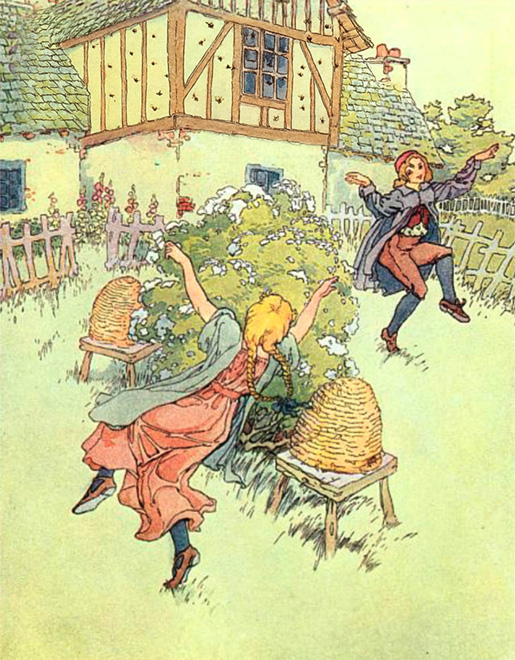About the Bush, Willie
About the bush, Willie,
About the bee-hive,
About the bush, Willie,
I'll meet thee alive.

About the Bush, Willie is a short Scottish nursery rhyme that first appeared in 19th-century printed collections. With its simple, almost cryptic lines, it belongs to the group of traditional rhymes that were passed down orally for generations before being printed.
Origins
 The rhyme was collected in the mid-19th century by James Orchard Halliwell in The Nursery Rhymes of England (1842–1849 editions). Halliwell’s work remains one of the main sources for many otherwise obscure verses.
The rhyme was collected in the mid-19th century by James Orchard Halliwell in The Nursery Rhymes of England (1842–1849 editions). Halliwell’s work remains one of the main sources for many otherwise obscure verses.
Its roots are thought to lie in Scottish oral tradition, where short refrains like this were often sung or chanted rather than spoken. Fragments of songs sometimes survived as children’s rhymes even after the fuller versions were forgotten.
The imagery of the “bush” and the “bee-hive” points to rustic life and natural surroundings, common motifs in Scottish folk verse.
Meaning
The rhyme’s meaning is uncertain, which has fueled curiosity among folklorists and readers alike. A few possibilities have been suggested:
-
A trysting place: The “bush” may refer to a broom bush or hedge where lovers or friends agreed to meet.
-
Bee-hive as industry: The bee-hive could symbolize work, sweetness, or abundance, turning the rhyme into a playful promise to meet in a lively, productive place.
-
Survival in fragments: The verse may be only part of a longer ballad or folk song now lost, leaving modern readers with a tantalizing remnant.
Like many traditional rhymes, its function may have been more rhythmic than literal. For children, the repetition and sound play would have been enough to preserve it across generations.
Cultural Background
Nursery rhymes in Scotland and northern England often borrowed imagery from daily life — fields, animals, farm tools, and familiar plants. The brevity of “About the Bush, Willie” suggests it was used either as a singing game or as a lullaby fragment, later repurposed into a nursery rhyme.
Although rarely quoted today, it remains part of the extensive corpus of minor rhymes collected in the 19th century, illustrating how even the shortest refrains carried echoes of rural life and earlier folk traditions.

